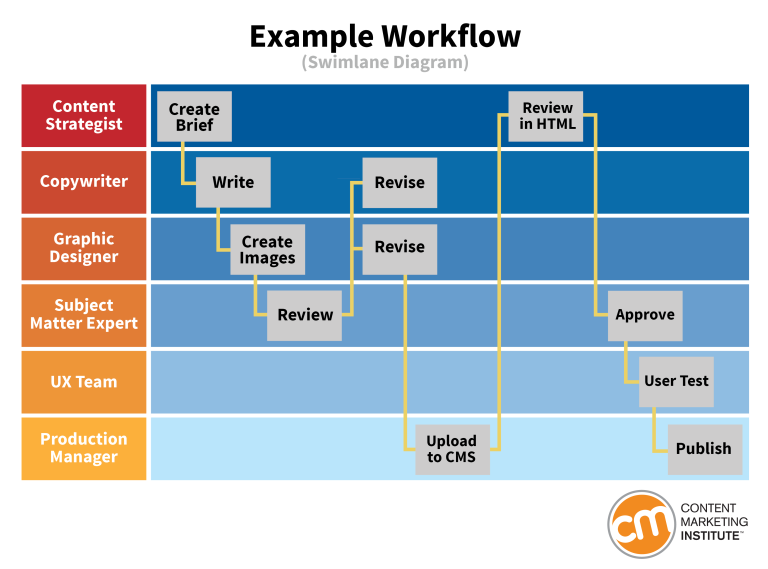How to Keep Your Content on Track with a Defined Workflow
Like any project, keeping your content team’s production on track -- that is, consistently delivering high-quality work that adds value for your audience, on time, and on budget -- requires a clearly defined workflow.
What Is a Content Workflow?
A content workflow is “is a set of tasks that a team needs to complete for a given client or content type — a web page, a blog post, a white paper, an email, or any other kind of content that the group needs to deliver.” It helps to guide teams on how content needs should be requested, sourced, created, reviewed, approved, and published. And whether or not your content workflow is clearly defined, you have one just by the nature of your content creation. A typical content workflow might include:
- Outline
- Write
- Review
- Edit
- Approve
- Publish
And once documented, your workflow will take a visual form that illustrates how these tasks progress through your team. The Content Marketing Institute gives this example: 
Ok, So How Can It Help Me?
Clearly defining your content workflow serves two particularly useful purposes:
- By breaking down your content production into its component phases, you can further break it down into easily digestible tasks and assign them to the appropriate resource depending on the stage of development; and,
- By defining how a piece of content should progress through your team, you can ensure that it progresses smoothly through each stage, including stakeholder approval and timely publishing.
Your content workflow tells each team member where they can expect each piece of content to be in its process so they can be prepared to contribute when their turn comes, as well as what they must do to ensure its progress. Similarly, content or project managers can then better assess the workflow at a higher level to mitigate any potential bottlenecks or impediments.
Defining Your Content Workflow
To define your team’s content workflow, we recommend using terms and roles that you’re already familiar with. Content workflows may share common elements, but they’re best when they’re adapted to suit your particular needs as this encourages buy-in at all levels. First identify the specific roles involved, the individual tasks involved in the creation of a typical piece of content, assign each task to one of the roles, and order the tasks in how they’re completed. Whether your team is Agile or not, you can still incorporate some of the methodology’s structure to help your content workflow process. For example, defining the acceptance criteria for each task will ensure that each role knows and understands both their responsibilities and what’s expected and necessary to complete them. Once the tasks and roles have been defined, you can begin to map out how content will progress through them. Being able to repeat your process for any piece of content will also mean that you can better predict the time that’s usually required for each phase. Knowing this, you can then map out these milestones and deadlines to illustrate which tasks are dependent on each other and when each role can expect to become involved. This may be something that your content or project manager would best be able to do based on their larger project experience.
Wrapping Up
Ensuring that your content progresses through its creation process smoothly requires a shared understanding among your team. And what each task is, what constitutes “done”, who is responsible for it, when their responsibility begins and ends, and what the expected timeline for completion is are all necessary to build that shared understanding.







